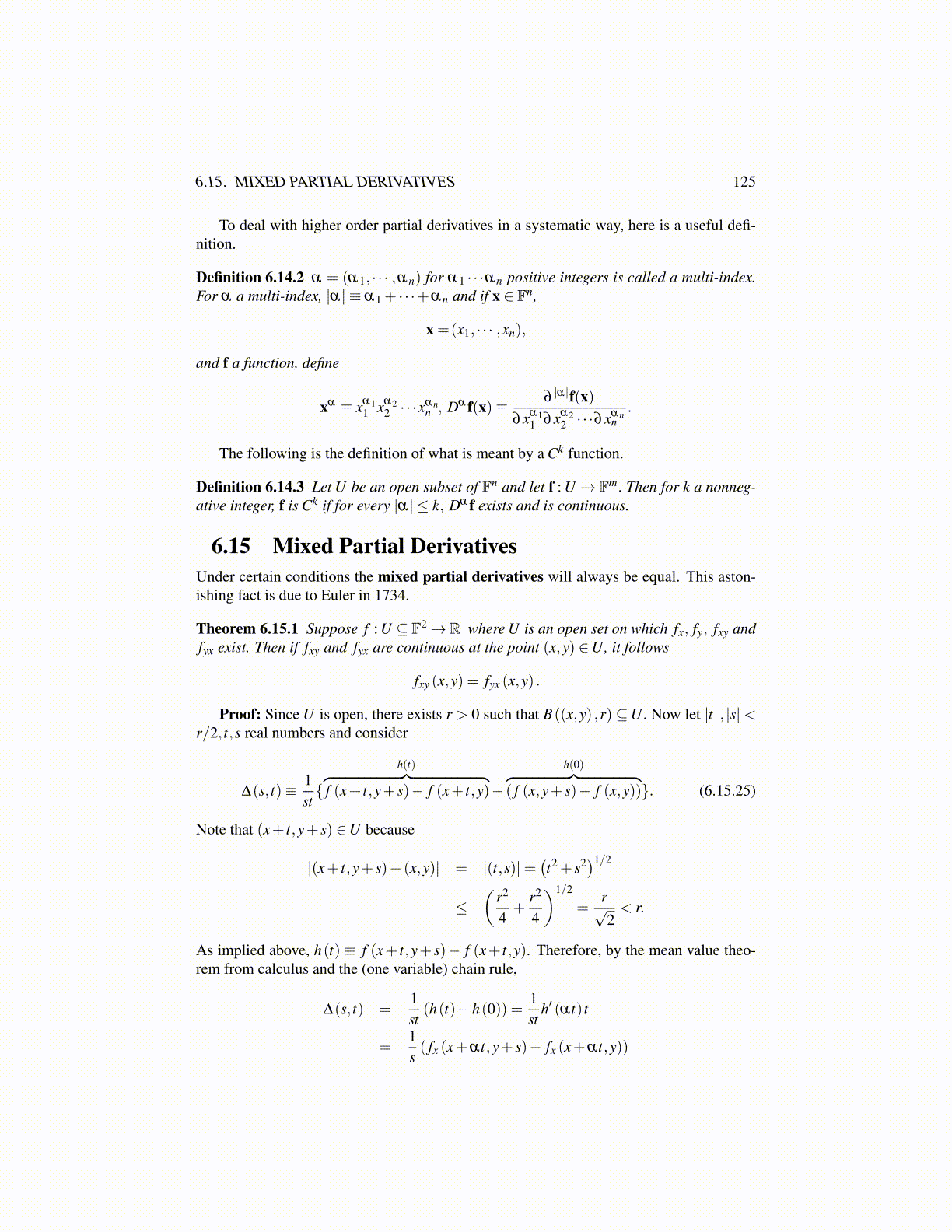
6.15. MIXED PARTIAL DERIVATIVES 125
To deal with higher order partial derivatives in a systematic way, here is a useful defi-nition.
Definition 6.14.2 α = (α1, · · · ,αn) for α1 · · ·αn positive integers is called a multi-index.For α a multi-index, |α| ≡ α1 + · · ·+αn and if x ∈ Fn,
x =(x1, · · · ,xn),
and f a function, define
xα ≡ xα11 xα2
2 · · ·xαnn , Dα f(x)≡ ∂ |α|f(x)
∂xα11 ∂xα2
2 · · ·∂xαnn
.
The following is the definition of what is meant by a Ck function.
Definition 6.14.3 Let U be an open subset of Fn and let f : U → Fm. Then for k a nonneg-ative integer, f is Ck if for every |α| ≤ k, Dα f exists and is continuous.
6.15 Mixed Partial DerivativesUnder certain conditions the mixed partial derivatives will always be equal. This aston-ishing fact is due to Euler in 1734.
Theorem 6.15.1 Suppose f : U ⊆ F2→R where U is an open set on which fx, fy, fxy andfyx exist. Then if fxy and fyx are continuous at the point (x,y) ∈U, it follows
fxy (x,y) = fyx (x,y) .
Proof: Since U is open, there exists r > 0 such that B((x,y) ,r)⊆U. Now let |t| , |s|<r/2, t,s real numbers and consider
∆(s, t)≡ 1st{
h(t)︷ ︸︸ ︷f (x+ t,y+ s)− f (x+ t,y)−
h(0)︷ ︸︸ ︷( f (x,y+ s)− f (x,y))}. (6.15.25)
Note that (x+ t,y+ s) ∈U because
|(x+ t,y+ s)− (x,y)| = |(t,s)|=(t2 + s2)1/2
≤(
r2
4+
r2
4
)1/2
=r√2< r.
As implied above, h(t) ≡ f (x+ t,y+ s)− f (x+ t,y). Therefore, by the mean value theo-rem from calculus and the (one variable) chain rule,
∆(s, t) =1st(h(t)−h(0)) =
1st
h′ (αt) t
=1s( fx (x+αt,y+ s)− fx (x+αt,y))